
Airbus Gears Up To Deliver RAF’s First A400M
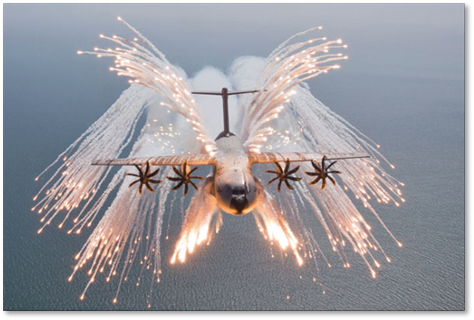
The UK Royal Air Force is gearing up to receive its first Airbus A400M tactical transport, having accelerated the schedule for receiving 22 of the type.
Lead UK aircraft MSN15 is at Airbus Defence & Space’s San Pablo final assembly site near Seville, Spain, and is expected to make its first flight around [the end of July].
The airlifter - which had originally been in production for France, until a delivery slot swap was agreed between the nations - will then be painted in RAF colours before a planned delivery target in September, the company says.
Lead UK aircraft MSN15 is at Airbus Defence & Space’s San Pablo final assembly site near Seville, Spain, and is expected to make its first flight around [the end of July].
The airlifter - which had originally been in production for France, until a delivery slot swap was agreed between the nations - will then be painted in RAF colours before a planned delivery target in September, the company says.
“We are very excited to have the A400M Atlas arriving into the Air Mobility force in the Autumn,” says Air Cdre Jon Ager, assistant chief of staff capability delivery (air mobility and air enablers). “Its introduction into service represents the greatest step change in tactical capability since the introduction of the C-130J.”
Airbus recently detailed a plan to deliver the RAF’s first four aircraft this year. The service expects to have received 10 by the end of 2015, a further six the following year and its remaining examples by 2018.
Airbus recently detailed a plan to deliver the RAF’s first four aircraft this year. The service expects to have received 10 by the end of 2015, a further six the following year and its remaining examples by 2018.
Flightglobal
From: Charles Cormack, Lyneham Village
Sent: Monday, June 30, 2014 4:08 PM
Subject: OBB #062714
Sent: Monday, June 30, 2014 4:08 PM
Subject: OBB #062714
Further to Ian Stacey's last submission : "I'm not sure that this quite fits into your exact category of 'Hotels' but I seem to recall that when we were first deployed to Lusaka on the Zambian Oil Lift the RAF contingent were housed in the local zoo!!"
The accomodation was in the Showground in Salisbury which was used for the display and sales of cattle just prior to our arrival. The only animals in the zoo he refers to were rockapes (RAF Regiment) which we were able to keep quiet by turning off the lights as we were just by the switch in the gallery.
Chas
The accomodation was in the Showground in Salisbury which was used for the display and sales of cattle just prior to our arrival. The only animals in the zoo he refers to were rockapes (RAF Regiment) which we were able to keep quiet by turning off the lights as we were just by the switch in the gallery.
Chas
Army troops bound for Eastern Europe
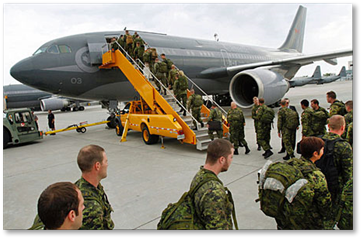
CFB TRENTON - A Canadian Army contingent of about 120 members from 3rd Battalion, Royal Canadian Regiment, part of 2 Canadian Mechanized Brigade Group based in Garrison Petawawa, Ont., headed to Eastern Europe from the air base here Monday afternoon.
Once in Europe, the troops will relieve a group of soldiers from 3rd Battalion, Princess Patria’s Canadian Light Infantry from Edmonton, who are currently participating in Operation Reassurance, a multilateral training initiative that allows the Canadian Army to showcase its capabilities and leadership.
Once in Europe, the troops will relieve a group of soldiers from 3rd Battalion, Princess Patria’s Canadian Light Infantry from Edmonton, who are currently participating in Operation Reassurance, a multilateral training initiative that allows the Canadian Army to showcase its capabilities and leadership.
In addition to Canada, participating nations include the three Baltic states: Latvia, Lithuania and Estonia, as well as Finland, United Kingdom, Norway, Denmark, Poland and the United States. Canadian soldiers currently in Europe have been conducting training with US and Polish allies since early May.
Through OP Reassurance, Canada remains committed to ensuring military personnel are adequately trained and equipped to provide safety and security when called upon, both at home and abroad.
Belleville Intelligencer
From: Wayne Flaherty, Medicine Hat, AB
Sent: Tuesday, July 15, 2014 12:39 PM
Subject: My most satisfying task
Sent: Tuesday, July 15, 2014 12:39 PM
Subject: My most satisfying task
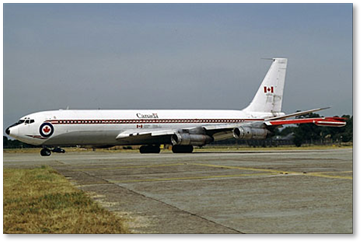
I was the loadie on a 707 freighter out of Edmonton early in the 80’s. There had been a terrible earthquake in Italy and we were tasked in getting relief aid to them ASAP.
When we took off out of Edmonton we were very heavy and used a lot of runway to get off the ground.
Just after take off the whole airplane started to shake but just mildly. Never had that happen before but we went on and managed to get the supplies to a very happy country. Nice to be able to do good things for people.
When we took off out of Edmonton we were very heavy and used a lot of runway to get off the ground.
Just after take off the whole airplane started to shake but just mildly. Never had that happen before but we went on and managed to get the supplies to a very happy country. Nice to be able to do good things for people.
On another 4 trips from Helsinki to various points in Russia, my MAMS team and I delivered 707 freighter loads of medical supplies to very grateful cities deep inside Russia. All of Russia was going through a severe shortage of these needed drugs and medical equipment.
Wayne
Wayne
Forces TV

A new television channel all about the armed forces has been launched. The factual channel, Forces TV, focuses on the work of the armed forces and the world of defence. You will be able to watch news, live events, features and documentaries about every aspect of the armed forces including operations, equipment, training, welfare, sport, charity fundraising and forces family life.You can tune into Forces TV at the following channels:
■
Sky 299
■
Virgin 244
■
Freesat 652
The channel’s primary target audience is the UK forces community, which is estimated at more than 12 million individuals comprising serving personnel, their families and friends, reservists, cadets, veterans and their dependants, and those who work alongside the forces and raise money for their charities.
Produced by the Services Sound and Vision Corporation (SSVC), the independent charity that runs the British Forces Broadcasting Service for UK military personnel and their families, the channel will also be supported by Sky and the BBC through the provision of their content.
Produced by the Services Sound and Vision Corporation (SSVC), the independent charity that runs the British Forces Broadcasting Service for UK military personnel and their families, the channel will also be supported by Sky and the BBC through the provision of their content.
SSVC Chief Executive Nick Pollard said, "The new channel will bring the UK viewer a 24-hour-a-day picture of everything the forces are doing, with great access behind the scenes, allowing the public to see an unprecedented picture of the military world. It’ll be full of unique insights and essential viewing for everyone who wants to understand what the armed forces are doing."
Forces TV will be broadcast round the clock from SSVC’s studios at Chalfont in Buckinghamshire. Early programmes include a documentary series featuring 3rd Battalion The Parachute Regiment, an exclusive production of the play ‘The Two Worlds of Charlie F’ about soldiers injured in battle, and a special series that goes behind the scenes at the Royal Hospital Chelsea.
Forces TV will be broadcast round the clock from SSVC’s studios at Chalfont in Buckinghamshire. Early programmes include a documentary series featuring 3rd Battalion The Parachute Regiment, an exclusive production of the play ‘The Two Worlds of Charlie F’ about soldiers injured in battle, and a special series that goes behind the scenes at the Royal Hospital Chelsea.
Welcoming the new channel, Prime Minister David Cameron said, "As more of our troops come home, it is vital that we do not lose touch with the amazing contribution that our armed forces have made and continue to make. We cannot forget them; we have to always remember the sacrifices they make.
"I am sure Forces TV will provide that vital link between the public and our servicemen and women and I wish it the very best for every success."
Forces TV is supported by a new content-rich website www.forces.tv and a major social media presence.
Gov.uk
"I am sure Forces TV will provide that vital link between the public and our servicemen and women and I wish it the very best for every success."
Forces TV is supported by a new content-rich website www.forces.tv and a major social media presence.
Gov.uk
From: Michael Hunter, Portland, ON
Sent: Wednesday, July 16, 2014 9:47 AM
Subject: My most satisfying task
In 1990 the CO at 3AMU Ottawa sent three corporals to Eureka for the TAMS support for the annual battery replacement on the Alert microwave line. Instead of superfluous supervisorial staff, he sent 3 workers to rig, sling and hook up the loads.
Because of weather and the 24 hours of daylight we worked any time around the clock as needed. When completed, we made our own way back to Ottawa via Thule as a BoxTop resupply was also on. My next task was Honduras, which is another story.
Michael
Sent: Wednesday, July 16, 2014 9:47 AM
Subject: My most satisfying task
In 1990 the CO at 3AMU Ottawa sent three corporals to Eureka for the TAMS support for the annual battery replacement on the Alert microwave line. Instead of superfluous supervisorial staff, he sent 3 workers to rig, sling and hook up the loads.
Because of weather and the 24 hours of daylight we worked any time around the clock as needed. When completed, we made our own way back to Ottawa via Thule as a BoxTop resupply was also on. My next task was Honduras, which is another story.
Michael
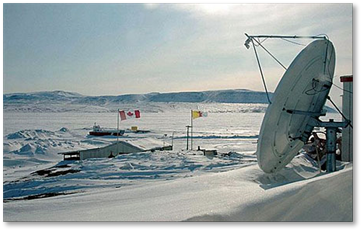
The Eureka research base on Canada's far-northern Ellesmere Island is often called the world's coldest inhabited place. It straddles the 80th parallel and was created as a weather station in 1947. The average annual air temperature is around -20°C. In winter that drops to around -40°C. For visitors to Eureka, the low temperatures are matched only by the high price of getting there. To add this chilly nowhere land to your travel resumé you need to fly in from Resolute - expect to pay around US$20,000 for the airfare.
Operation Submarine Rescue
In August 2005, in a remote bay off the Kamchatka Peninsula in the far northeast of the Asian continent, a Russian Navy mini-submarine on a mission to a secret underwater facility came to an unexpected halt. In the darkness hundreds of feet below the surface, it had run into a web of cables. Attempts to escape only trapped it tighter. With seven men on board a vessel designed for four, the air quickly started to run out.
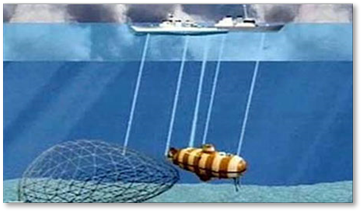
The crew trapped on board the mini-submersible AS28 had reason to hope this time would be different. President Putin had poured funds into new rescue equipment after the Kursk disaster. But as the hours ticked by, optimism faded. The only other submersible in the area was in pieces on the dockside and, when one of Putin’s brand-new rescue robots was deployed, an inexperienced pilot sent it through the ship’s propeller, severing the cable that linked the robot to the ship, rendering it useless. The Russians resorted to trying to snag the stricken sub with grappling hooks.
In the tough frontier town of Petropavlovsk, the wife of the vessel’s young pilot sensed something was wrong. She called the naval headquarters in Petropavlovsk, but the staff denied that there was any problem. That could have been the end of it, but once a local radio station got wind of the story the news rapidly went global.
In the tough frontier town of Petropavlovsk, the wife of the vessel’s young pilot sensed something was wrong. She called the naval headquarters in Petropavlovsk, but the staff denied that there was any problem. That could have been the end of it, but once a local radio station got wind of the story the news rapidly went global.
Inside the British Operation - by Frank Pope
On the other side of the globe, the Royal Navy’s elite submarine rescue team were asleep, unaware of the drama that would soon overtake them. Five years previously an explosion had sunk the Russian nuclear submarine Kursk - they’d scrambled to help, but had been prevented from doing so by paranoid Russian authorities. A handful of sailors survived the initial blast but died a grim, claustrophobic death in their metallic tomb. In all, 118 men perished.
When it reached the UK, Commander Ian Riches of the Submarine Rescue Service wasted no time in mobilising his men. He knew that every minute mattered. He was well-acquainted with a long history of underwater accidents, attempted rescues and failed escapes.
Although paid for and run by the Royal Navy, the men who crewed the SRS were civilians. Their training came from working in the brutal conditions of the North Sea as subsea engineers, vehicle pilots and surface support technicians for oil and gas companies. Their rough-and-ready appearance belied an unmatched expertise in pulling off difficult missions deep beneath the sea. As they pulled together their equipment, few believed that the Russians would agree to be assisted, or that they could get there in time.
Although paid for and run by the Royal Navy, the men who crewed the SRS were civilians. Their training came from working in the brutal conditions of the North Sea as subsea engineers, vehicle pilots and surface support technicians for oil and gas companies. Their rough-and-ready appearance belied an unmatched expertise in pulling off difficult missions deep beneath the sea. As they pulled together their equipment, few believed that the Russians would agree to be assisted, or that they could get there in time.
Meanwhile, Captain John Holloway, the naval attaché at the British Embassy in Moscow and an ex-submariner, was furiously working to persuade the Russians to accept assistance. He was not about to let this diplomatic opportunity slip away. For a long time he’d been working to build links between the Russian Navy and the Royal Navy, and a successful rescue mission could transform relations.
Time was already short. Estimates released by the Russian Navy varied wildly, with some saying the trapped men could last several days and others saying that they had only hours left. When Captain Holloway informed the Russian Ministry of Defence that the SRS could reach the trapped men within 36 hours if requested, a Russian vice-admiral called back immediately not only to accept, but to ask if the team could get there any faster.
Time was already short. Estimates released by the Russian Navy varied wildly, with some saying the trapped men could last several days and others saying that they had only hours left. When Captain Holloway informed the Russian Ministry of Defence that the SRS could reach the trapped men within 36 hours if requested, a Russian vice-admiral called back immediately not only to accept, but to ask if the team could get there any faster.
With their diplomatic invitation in place, the RAF scrambled aircraft, and a motley crew of oil-rig types and naval officers was soon assembled at Glasgow airport. As they loaded the kit into the C17 long-range military transport, the pilots were busy calculating a route none of them had ever flown, arcing up over the Russian Arctic to the Elizovo military airfield.
On the trapped submersible, only one canister of carbon-dioxide-absorbing and oxygen-releasing chemicals remained. The crew were huddled in the aft compartment of the tiny craft to try to keep warm. The captain was gasping badly in the foul air. He should never have been there, having lost a kidney and part of one lung during an earlier illness, but the usual commander was away. Most of the rest of the crew were young men with families. One by one they slipped into the forward compartment to write farewell notes.
On the trapped submersible, only one canister of carbon-dioxide-absorbing and oxygen-releasing chemicals remained. The crew were huddled in the aft compartment of the tiny craft to try to keep warm. The captain was gasping badly in the foul air. He should never have been there, having lost a kidney and part of one lung during an earlier illness, but the usual commander was away. Most of the rest of the crew were young men with families. One by one they slipped into the forward compartment to write farewell notes.
The C17 was the first foreign aircraft to land at the airbase outside Petropavlovsk. Riches and his men were ready to hit the ground as soon as the wheels stopped rolling, but they quickly ran into the systemic dysfunction at the heart of Russia’s armed forces.
With their compatriots gasping for air in the deep, dark sea, Air Force officials ordered the team to compile a detailed inventory of all their equipment for Customs. It would be the first of many maddening delays.
With their compatriots gasping for air in the deep, dark sea, Air Force officials ordered the team to compile a detailed inventory of all their equipment for Customs. It would be the first of many maddening delays.
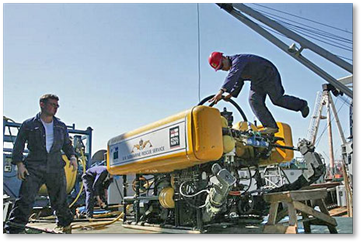
When the team finally made it to the dock they found the ship allocated to them - a rusting military charter guarded by feral dogs. The UK’s rescue vehicle, known as Scorpio, was lifted off the dockside and dropped heavily on deck. The Russian crew had been trapped for almost 60 hours.
Stuart Gold, a Scottish civilian electrical engineer who ran all of Scorpio’s operations, set about preparing the vehicle. He had looked after Scorpio for more than a decade and knew its every last nut and bolt. But when he hooked Scorpio to the Russian ship’s electrical systems and turned it on, the vehicle was dead. Every screen was blank. He’d never seen anything like it.
Stuart Gold, a Scottish civilian electrical engineer who ran all of Scorpio’s operations, set about preparing the vehicle. He had looked after Scorpio for more than a decade and knew its every last nut and bolt. But when he hooked Scorpio to the Russian ship’s electrical systems and turned it on, the vehicle was dead. Every screen was blank. He’d never seen anything like it.
With only five hours until the ship reached its goal, Gold calmly began to strip the machine and - with only minutes to spare - managed to fix the many connections that had come loose.
On station above the submersible at last, Gold launched the rescue vehicle. After long minutes in the dark water they glimpsed a vast metallic cylinder hanging in front of them. The structure was part of a top-secret array of underwater microphones built to listen out for enemy submarines as they criss-crossed the Pacific. Next to it was the red-and-white striped hull of the stricken submersible. Slowly, carefully, they began cutting the lines with remotely operated shears. Then, with only one more cable to cut, Scorpio’s underwater shears collided with the submersible and could no longer function. The team had no choice but to bring Scorpio back to the surface.
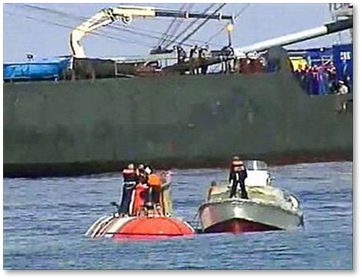
When Scorpio eventually returned the submarine looked lifeless. Once the last cable was cut it hung there, free but motionless. The team feared the worst. Then, slowly, AS28 began to rise. When it broke the surface huge cheers erupted from the assembled surface fleet.
When a Russian launch towed it out of sight of the British team before the hatch was opened, Commander Riches assumed this meant that there was something the Russians wanted to hide.
Then the call came through on the radio. All seven men were still alive. They’d done it!
When a Russian launch towed it out of sight of the British team before the hatch was opened, Commander Riches assumed this meant that there was something the Russians wanted to hide.
Then the call came through on the radio. All seven men were still alive. They’d done it!
Inside the trapped vessel, lack of oxygen and the build-up of carbon dioxide meant the men could hardly move. They had now been inside for 70 hours. The stink of vomit, excrement and urine was overpowering. As they heard the whine of the foreign machine fade they were flooded with despair.
The rescued men were rushed ashore and bundled into a military ambulance. Their wives and families were waiting on the dockside but could only press their hands to the windows as the van sped off. Their debriefing was evidently severe, and any talk of their fear, suffering and farewell notes was banned. Only later did some wives speak up, prompted by the fact that their husbands were blamed for embarrassing the Russian Navy.
On the fleet of rescue ships the atmosphere was one of jubilation. The British crew were invited to the bridge of their vessel and the first vodka toast was drunk. For the next 12 hours they continued. For some the relief was overwhelming. Pete Nuttall, Scorpio’s pilot, was an RNLI volunteer in the UK and had recently been part of a failed attempt to rescue a father and son. As it became clear that seven fathers had been saved, he broke down in tears.
It wasn’t until months later that the British team met the men whose lives they had saved, when a documentary crew brought them back to Kamchatka. Despite the language barrier and never having met before, the reunion was emotional.
It wasn’t until months later that the British team met the men whose lives they had saved, when a documentary crew brought them back to Kamchatka. Despite the language barrier and never having met before, the reunion was emotional.
UKMAMS - once again FILO!
On 4 Aug 05 a Russian submarine, AS28, sent a signal of distress to the Nation, having become entangled in fishing nets off the coast of Petropavlovsk. The decision was made that the UK and USA would send rescue equipment and specialist rescue teams to assist in the safe recovery of 7 Russian submariners. It was believed that the crew on board only had 48 hrs of oxygen left, so the rapid reaction from the UK and USA was critical.
At approx 1030 hrs on 4 Aug 05 UKMAMS Ops received information regarding the mission; they then had the task of finding 4 team members who were available at short notice. The team consisted of 1 x FS C17 Supervisor (FS Tony Stock), 1 x Cpl (Cpl Alex Morgan), and 2 x SAC Movs Controllers (SAC Leon Muir and SAC Ross 'Eric' Bristow).
At approx 1030 hrs on 4 Aug 05 UKMAMS Ops received information regarding the mission; they then had the task of finding 4 team members who were available at short notice. The team consisted of 1 x FS C17 Supervisor (FS Tony Stock), 1 x Cpl (Cpl Alex Morgan), and 2 x SAC Movs Controllers (SAC Leon Muir and SAC Ross 'Eric' Bristow).
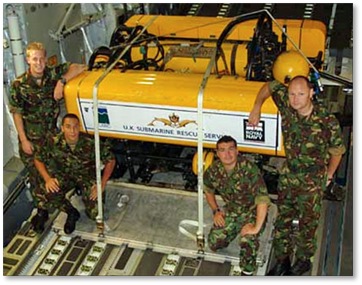
The team had approximately 11⁄2 hrs to pack for an operation which had no confirmed recovery date; we were then driven to RAF Brize Norton to meet and board C17 Flt 6564 to Yelizovo via Prestwick. Once the MAMS team arrived at Brize Norton we were met by Sgt 'Plug' Harvey with the information of what load we were expecting to collect at Prestwick. At 1315Z hrs we departed Brize Norton on the first leg of the journey, with an approximate flight time of one hour.
We were met at Prestwick by Cdr Iain Riches, RN, who gave further information of the task. The equipment arrived at the aircraft promptly, and with assistance from FS Steve Joyce and Cpl Robbie Collins (JATEU) we began building an assortment of pallets. The load consisted of:
We were met at Prestwick by Cdr Iain Riches, RN, who gave further information of the task. The equipment arrived at the aircraft promptly, and with assistance from FS Steve Joyce and Cpl Robbie Collins (JATEU) we began building an assortment of pallets. The load consisted of:
1 x Control Cabin (triple pallet) 1 x Crane (double pallet) 1 x Winch (double pallet) 1 x Cabin (single pallet) 1 x Rov Submarine (single pallet) 10 x passengers (Rescue Team) with a total payload of 63000 lbs. After expediting the rapid turnround at Prestwick we pushed on towards Russia. The route took us east over Russia and 400 miles outside the North Pole. We arrived at Yelizovo at 0525Z hrs, so in terms of response time we were offloading in Russia within 20 hours from being notified, and 2 hours in front of the Americans.
After the offload the rescue equipment was transported to the port of Petropavlovsk, which was a 1 1/2 hour truck journey from the airport. Time was running low for the submariners and every minute counted; each and every one of the teams involved in this operation played a vital part in the timings and it was critical no mistakes were made. With no communications between us and the rescue team we sat close by a TV set in a local tavern, and with the help of RAF Interpreter Sgt Martin Goodson we conquered the language barrier and watched the news for updates. After finding out that the rescue attempt was successful, we celebrated as the owner of the tavern thanked us with 2 bottles of his finest vodka and made a touching speech. Under the constant watchful eye of Boris, a leiutenant in the Russian Security Force, we left the tavern on a small expedition to a naturally heated swimming bath for a Sunday swim.
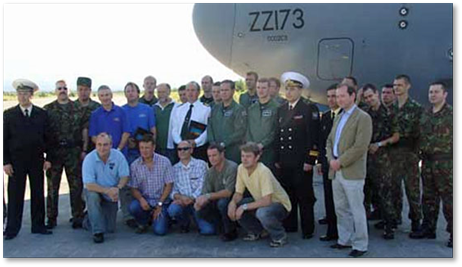
The day finally arrived on 8 Aug 05 and we were all surprisingly eager and looking forward to Brize In-Flight Catering! We loaded the equipment and returned to the Russian barrack blocks for a good night's sleep.
The departure morning came and we were unexpectedly presented with more vodka and caviar, and a final thank you for our efforts, by a 2 Star Rear Admiral of the Pacific Fleet.
Thanks to the C17 crew and 99 Sqn, UKMAMS were once again 'First In - Last Out'
The departure morning came and we were unexpectedly presented with more vodka and caviar, and a final thank you for our efforts, by a 2 Star Rear Admiral of the Pacific Fleet.
Thanks to the C17 crew and 99 Sqn, UKMAMS were once again 'First In - Last Out'
After the third day of being served mashed potato and meat for breakfast, lunch and dinner we were looking forward to the arrival of the freight for us to pack up and return to the UK.
From: Richard Lloyd, Dalgety Bay
Sent: Thursday, July 17, 2014 8:11 AM
Subject: My most satisfying task
Sent: Thursday, July 17, 2014 8:11 AM
Subject: My most satisfying task
I called home & explained I might be delayed for a bit, then reported to Sqn Ldr Tov Tovell, Gütersloh SAMO. From Thursday night, through Friday and Saturday and until Sunday lunchtime, I have no accurate recall of what happened hour by hour, only that we handled a huge number of C130s, loading them with troops and palletised baggage, engines still running, throughout the next 60 hours. We snatched a little sleep. I got to bed on Sunday at 1400 and slept for 22 hours. This made me late for work in Supply Squadron on Monday, for which I got a serious bollocking. That last sentence is not true.
Richard
Richard
My most satisfying task - (perhaps apart from the last day at Khormaksar!)
From Feb 1970 to Feb 1973, I was OCSCAF at RAF Gütersloh. On Thursday 27th July 1972, I had spent the day doing exciting SCAF things - signing hundreds of vouchers, visiting friends in 19 Squadron next door, getting ready for month-end accounting finalisation, wondering why I couldn't reconcile the stockholding of aerial photographic paper with our numbers: already the day had been gripping. My boss Sqn Ldr Jim Shearer called me in. 'We're going to reinforce Northern Ireland. It's called Operation Motorman. You and I are seconded to movements until it's over, and I'm flying to UK in a Lightning T4 to get briefed.' 'No time for a post-work beer then?' I jested.
From Feb 1970 to Feb 1973, I was OCSCAF at RAF Gütersloh. On Thursday 27th July 1972, I had spent the day doing exciting SCAF things - signing hundreds of vouchers, visiting friends in 19 Squadron next door, getting ready for month-end accounting finalisation, wondering why I couldn't reconcile the stockholding of aerial photographic paper with our numbers: already the day had been gripping. My boss Sqn Ldr Jim Shearer called me in. 'We're going to reinforce Northern Ireland. It's called Operation Motorman. You and I are seconded to movements until it's over, and I'm flying to UK in a Lightning T4 to get briefed.' 'No time for a post-work beer then?' I jested.
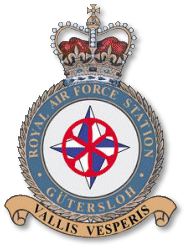
Eight sites shortlisted for Britain's first spaceport
Britain is set to get its first spaceport with eight sites being considered - six of which are in Scotland. The aim is to use the port to launch tourists into space as well as commercial satellites.
Here are the eight candidate sites:
Here are the eight candidate sites:
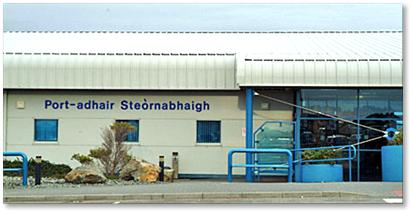
Stornoway airport is on the Isle of Lewis, in the Outer Hebrides of Scotland. It provides access to the Western Isles, with flights from Inverness, Edinburgh, Aberdeen and Glasgow as well as inter-Island services. 130,000 passengers pass through the terminal each year.
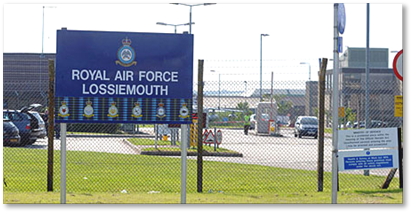
RAF Lossiemouth is just west of the town of Lossiemouth in Moray, Scotland. The base is one of the largest and busiest fast-jet bases in the Royal Air Force.
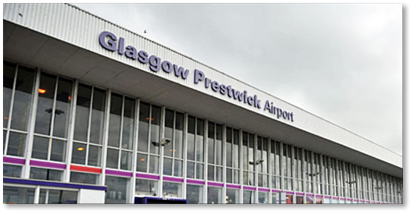
Glasgow Prestwick Airport is Glasgow's second airport located about one mile from Prestwick in South Ayrshire, Scotland. It has one terminal which flies 1.9 million passengers each year and is home to four airlines.
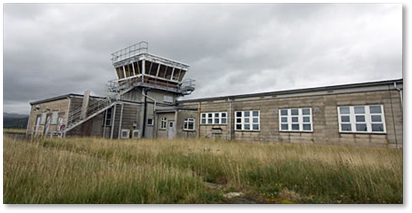
Llanbedr airport is in the Snowdonia National Park near the village of Llanbedr, North Wales. It is the only site in Wales to be shortlisted as a spaceport.
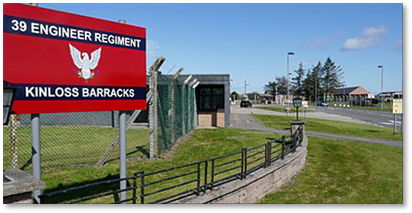
Kinloss Barracks was called RAF Kinloss but it was officially handed over to the army in July 2012. Kinloss is on the Moray Coast in Scotland, about three miles from the small town of Forres and 27 miles from Inverness.
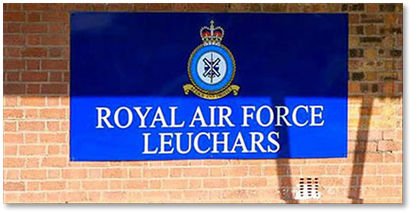
RAF Leuchars is the second most northernly air defence station in the UK. It is in Fife on the east coast of Scotland close to St Andrews. The station is mainly responsible for providing crews and aircraft to police UK airspace.
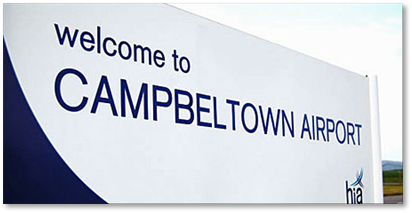
Campbeltown airport is on the western side of the Kintyre peninsula in Scotland approximately three miles west of Campbeltown. The Runway is 3,049 meters long, the longest of any public airport in Scotland.
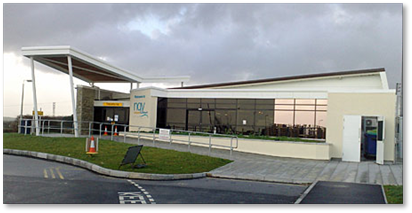
Newquay Cornwall Airport, located between Newquay and Wadebridge, is the main commercial airport for Cornwall. Flights from the airport go to destinations including Edinburgh, Paris and Zurich.
ITV.com
From: Tony Fowler, Gatwick
Sent: Saturday, July 19, 2014 6:42 AM
Subject: Satisfying task
Hi Tony,
An interesting topic and I’m sure all of us ex-MAMS guys could provide some great stories of our Most Satisfying Task! Although we have all been involved in the usual humanitarian relief missions, conflicts etc., that obviously changed many people’s lives, I recall another task that was a bit closer to home and a little unusual.
Sent: Saturday, July 19, 2014 6:42 AM
Subject: Satisfying task
Hi Tony,
An interesting topic and I’m sure all of us ex-MAMS guys could provide some great stories of our Most Satisfying Task! Although we have all been involved in the usual humanitarian relief missions, conflicts etc., that obviously changed many people’s lives, I recall another task that was a bit closer to home and a little unusual.
Thanks to Neil B. and all the approvals in place a bus full of Hereford civilian staff headed off from Credenhill to the secret air base in Wiltshire!
During the static Herc tour, I briefed the group on the aircraft’s multi-function role to include Para, Air drop, Cargo, Pax, an Airborne communications centre and Forward Air Refuelling Point.
Some of the group were astonished to hear that their own boss, the QM himself, would have in his younger days jumped from the ramp at 20 plus thousand feet on oxygen; they were literally speechless!
During the static Herc tour, I briefed the group on the aircraft’s multi-function role to include Para, Air drop, Cargo, Pax, an Airborne communications centre and Forward Air Refuelling Point.
Some of the group were astonished to hear that their own boss, the QM himself, would have in his younger days jumped from the ramp at 20 plus thousand feet on oxygen; they were literally speechless!
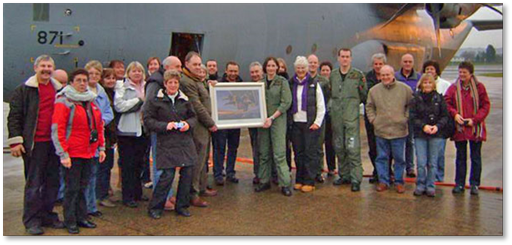
As one of the RAF Movements Detachment SNCOs at Hereford Garrison, I worked for the QM22 SAS, a badged Major who had basically been there, seen it and done it; a legend in his own right! The Quarter Master’s department, for anyone who doesn’t know, is made up of various logistics and procurement staff to include RAF, RLC stores, ammo techs etc., and a lot of civil servants, mainly stores people and accountants. The department is headed up by 4 SAS guys: QM, QM2, RQMS and RQMS2, needless to say the “Movers Detachment” is a very important element and contributes significantly to the success of the unit.
Regards,
Tony
Tony
In 2007, whilst living on base in the WO & Sgts Mess and having been looked after by a wonderful group of civvie mess staff, I decided to give something back to all the base’s civil servants. Exercise Blue Beret was planned.
Ex Blue Beret’s objective was to take about 30 Hereford-based civil servants to RAF Lyneham for an overview of the station’s role, visit UKMAMS/1AMW, have a tour of a static C130K, a loading demo, lunch and then hopefully finish with a local flyer.
Ex Blue Beret’s objective was to take about 30 Hereford-based civil servants to RAF Lyneham for an overview of the station’s role, visit UKMAMS/1AMW, have a tour of a static C130K, a loading demo, lunch and then hopefully finish with a local flyer.
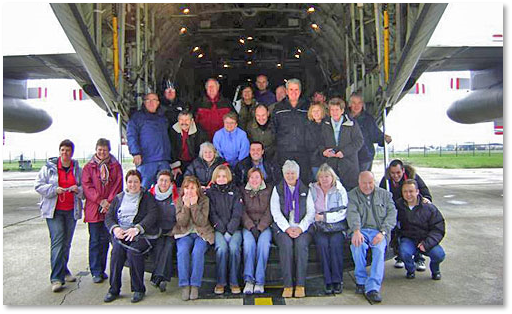
Firstly I needed to obtain the CO’s and QM’s approval, followed by the SFAC (Wg Cdr - Special Forces Air Commander) who could authorise the local flyer with 47 Sqn, WO SF Movs sat in his London office was ideally situated to work his magic!
The group then embarked on a local flyer kindly supported by a 47 Squadron crew for an hour-long flight that also flew them over their Hereford camp. With a safety net fitted, the ramp and door opened in-flight for the full experience! Upon return to Lyneham we presented the crew with a limited edition SF C130 HALO print.
Needless to say, the RAF Hereford SF Detachment and I were very popular with the civvies! Many comments were made about the new spring in the step of the civil servants from the CO down.
Since that initial exercise, we were able to follow up with the same in 2009 including a trip on a J model. I understand from a recent visit to Hereford the current RAF team are planning Ex Blue Beret 3 in the near future
Since that initial exercise, we were able to follow up with the same in 2009 including a trip on a J model. I understand from a recent visit to Hereford the current RAF team are planning Ex Blue Beret 3 in the near future
The Exercise was a complete success thanks to the support of MAMS training, MT, BAMF, Station Ops and 47 Sqn crew. But what makes it one of the most satisfying tasks was the gratitude of the entire group and one individual saying it had been the best day of his working life!
New Air Movements Terminal Ohakea
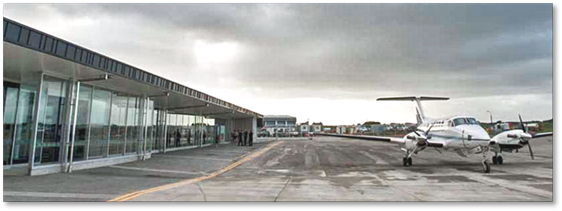
The new Air Movements Terminal, Ohakea, was opened by the Minister of Defence, the Honourable Dr Jonathan Coleman, on 19 June.
The new terminal is the latest element of Project Takatini and has been built to replace the old, small Air Movements facility that was not able to cope with demands placed on it.
The new terminal is the latest element of Project Takatini and has been built to replace the old, small Air Movements facility that was not able to cope with demands placed on it.
The conference centre is expected to be used not only by Ohakea based units, but by other NZDF commands. With the number of NZDF exercises and on-going ops deployments.
In addition, the number of conference facility clients means the new AMT will be well-used, boosting inter-service operability and supporting defence international partnerships.
In addition, the number of conference facility clients means the new AMT will be well-used, boosting inter-service operability and supporting defence international partnerships.
RNZAF News
At a cost of $12.5 million, the new terminal is a substantial and cost-effective investment for the Air Force and NZDF as a whole, particularly given the concentration of force elements in the central North Island. The new AMT is expected to cope with the projected modernisation across the NZDF.
The facility covers 5,800 square metres and is multifunctional, including conference facilities, baggage handling areas, a purpose-built freight handling facility, with secure military communication systems, and international transfer and customs capability.
The building will only be used for NZDF personnel passenger transfer and freight transport business; it will expedite international and national passenger processing, freight transport and operational activities, increasing the NZDF’s capabilities for operational deployments or exercises.
The building will only be used for NZDF personnel passenger transfer and freight transport business; it will expedite international and national passenger processing, freight transport and operational activities, increasing the NZDF’s capabilities for operational deployments or exercises.
From: John Wickham, Basrah
Sent: 23 July 2014, 12:12 pm
Subject: Coordinator - Load Control - Muscat
Sent: 23 July 2014, 12:12 pm
Subject: Coordinator - Load Control - Muscat
COORDINATOR - LOAD CONTROL
(Posted: 21 Jul 2014 08:22 PM PDT)
Job Information - Coordinator - Load Control - Muscat - Apply Online
Principal/Project: Oman Air
Job Description and Requirements/Qualifications: Candidates must have at least Bachelor's / College Degree. The job requires male applicants only. Minimum of 2 years working experience is required for this position. Applicants must be 24 to 38 years old
Experience: Minimum of 2 years Airline/Handling experience either above or below the wing in one or more core areas such as ramp, load control, passenger services and cargo in any major international airport.
(Posted: 21 Jul 2014 08:22 PM PDT)
Job Information - Coordinator - Load Control - Muscat - Apply Online
Principal/Project: Oman Air
Job Description and Requirements/Qualifications: Candidates must have at least Bachelor's / College Degree. The job requires male applicants only. Minimum of 2 years working experience is required for this position. Applicants must be 24 to 38 years old
Experience: Minimum of 2 years Airline/Handling experience either above or below the wing in one or more core areas such as ramp, load control, passenger services and cargo in any major international airport.
From: Wayne Donner, Medicine Hat, AB
Sent: Saturday, July 19, 2014 11:29 AM
Subject: My most satisfying task
Sent: Saturday, July 19, 2014 11:29 AM
Subject: My most satisfying task
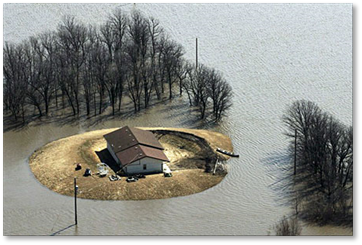
Another event was helping to put out forest fires that were raging out of control in northern Alberta and the Territories; dumping thousands of gallons of water on raging fires to save peoples homes and lands.
Wayne Donner
Wayne Donner
From: Syd Avery, Guardamar, Alicante
Sent: Monday, July 21, 2014 2:41 PM
Subject: Memorable Task
Sent: Monday, July 21, 2014 2:41 PM
Subject: Memorable Task
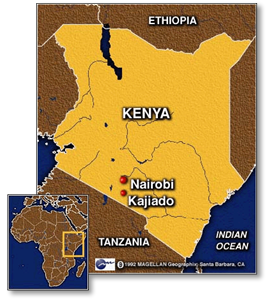
I think my most memorable task was the first time I visited our "adopted" school at Kajiado, just outside Nairobi, with a delivery from the Squadron of toys, clothes and mobility aids for the children there. Seeing how the children and staff reacted to both the Team, and more importantly what we had taken them brought the proverbial lump to the throat. Yes, we did make a difference to their lives, for the better.
I suppose that sitting and thinking back about all the tasks that all of us carried out, must have affected the lives of people throughout the world in one way or another. Although we did not see it, collectively, we must have had some effect, but in most cases, we will never know.
Regards, Syd
I suppose that sitting and thinking back about all the tasks that all of us carried out, must have affected the lives of people throughout the world in one way or another. Although we did not see it, collectively, we must have had some effect, but in most cases, we will never know.
Regards, Syd
Here is one of many of my most satisfying tasks. In June 1979 there were massive floods stretching from Winnipeg south to Emerson (Canada and US border).
For three straight weeks flying as a Loadie on the CH 047 Chinook helicopter we flew troops, food and fuel to the devastated communities in this area.
A few places we could land and drop off supplies but others that were surrounded by water we would hover and lower supplies that were slung to those people who needed help.
For three straight weeks flying as a Loadie on the CH 047 Chinook helicopter we flew troops, food and fuel to the devastated communities in this area.
A few places we could land and drop off supplies but others that were surrounded by water we would hover and lower supplies that were slung to those people who needed help.
It was a very satisfying feeling after every trip, on returning to Winnipeg, that we could help these folks until the water resided and try and get their lives back to some sort of normality.
Life seems to get complicated during the festive season and, by mid-December, we were informed that RELIEF was placed on hold and DELIVERANCE was to take priority.
The aim of this new operation was to receive the Canadian Airborne Regiment (about 800 troops plus equipment) deploying from Canada to Somalia and move them to their operating location in Belet Huen (well, it was initially set for Baledogle).
The bulk of the equipment was shipped from Canada on an Auxiliary Oil Replenishment (AOR) ship while the troops were flown by military aircraft. The two main points of entry were the Mogadishu sea and air ports. To complicate matters a little further, the Regiment had an advance party in Balegogle before the new operating location at Belet Huen was announced.
The aim of this new operation was to receive the Canadian Airborne Regiment (about 800 troops plus equipment) deploying from Canada to Somalia and move them to their operating location in Belet Huen (well, it was initially set for Baledogle).
The bulk of the equipment was shipped from Canada on an Auxiliary Oil Replenishment (AOR) ship while the troops were flown by military aircraft. The two main points of entry were the Mogadishu sea and air ports. To complicate matters a little further, the Regiment had an advance party in Balegogle before the new operating location at Belet Huen was announced.
The biggest challenges, at least from my perspective, were effective passage of information between the Regiment, our Navy, and us at the Airlift Coordinating Element (ALCE). Thankfully, the ALCE Commander - LCol Amos Scott (Wing OpsO Edmonton) - basically gave me carte blanche to plan, coordinate and control MAMS operations.
After a few recce trips in Somalia and communications with our Air Transport Group HQ in Trenton, at Christmas time, we received something like 50 additional MAMS personnel sourced from 1 AMU, 2 AMU Trenton, and 3 AMU Ottawa to be prepositioned at Baledogle (to cover the airlift of the Advance Party now at the wrong location), Mogadishu, Belet Huen, and Nairobi.
After a few recce trips in Somalia and communications with our Air Transport Group HQ in Trenton, at Christmas time, we received something like 50 additional MAMS personnel sourced from 1 AMU, 2 AMU Trenton, and 3 AMU Ottawa to be prepositioned at Baledogle (to cover the airlift of the Advance Party now at the wrong location), Mogadishu, Belet Huen, and Nairobi.
While the troops were arriving by air, the cargo onboard the AOR was offloaded at the port and a lot of it was airlifted from the ship to the seaport by Sea King helicopters (“slung loads”).
These slung load deliveries did not last very long since the airport - controlled by USAF Military Airlift Command (MAC) - now Air Mobility Command (AMC) - did not appreciate the “uncontrolled” arrival of our Sea Kings.
These slung load deliveries did not last very long since the airport - controlled by USAF Military Airlift Command (MAC) - now Air Mobility Command (AMC) - did not appreciate the “uncontrolled” arrival of our Sea Kings.
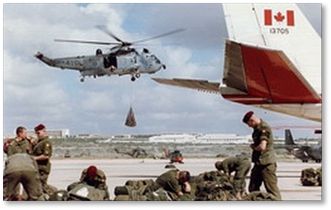
From: Jean-Pierre Pichette, Plainfield, ON
Sent: Wednesday, July 23, 2014 1:19 PM
Subject: My most satisfying task
Hello Tony. This is indeed an interesting topic of the month. For me, as a Mover, my most satisfying task was OIC MAMS (deployed in Kenya) during Canadian Forces operation DELIVERANCE in late 1991 and early 1992. In actuality, prior to DELIVERANCE, we had a small MAMS contingent from 1 Air Movements Unit (AMU) Edmonton operating from Nairobi airport in support of operation RELIEF - the delivery of humanitarian aid (namely basic food stuff) by C130 to various destinations in Somalia.
We started RELIEF in early December 1991 with about 10 MAMS personnel using three C130 chalks/day. This rather “routine” schedule and simple operation was about to change - drastically!
Sent: Wednesday, July 23, 2014 1:19 PM
Subject: My most satisfying task
Hello Tony. This is indeed an interesting topic of the month. For me, as a Mover, my most satisfying task was OIC MAMS (deployed in Kenya) during Canadian Forces operation DELIVERANCE in late 1991 and early 1992. In actuality, prior to DELIVERANCE, we had a small MAMS contingent from 1 Air Movements Unit (AMU) Edmonton operating from Nairobi airport in support of operation RELIEF - the delivery of humanitarian aid (namely basic food stuff) by C130 to various destinations in Somalia.
We started RELIEF in early December 1991 with about 10 MAMS personnel using three C130 chalks/day. This rather “routine” schedule and simple operation was about to change - drastically!
Shortly after Christmas, we had established the required MAMS and ground equipment at each operating location. We did not stop for New Year’s celebrations - we simply kept going - working 12-16 hours/day. A little sidebar here: this is Somalia, extremely hot and humid with temperatures floating between 35 and 45 deg C; a desert with very fine sand that gets into everything; and spiders the size of small cats (OK, a little exaggeration here - sorry!). A large portion of the Regiment moved by road to Belet Huen but we still airlifted water, ammo, and rations plus many troops by C130. It took us about four weeks to accomplish our mission.
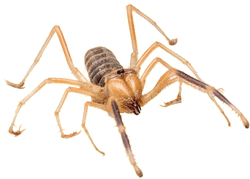
By the end of January 1992, the surge was over and the sustainment phase began. It worked because key players between the Navy, the Regiment, and us at ALCE understood each other and effectively collaborated to achieve success. The MAMS personnel involved in DELIVERANCE did a superb job.
JP Pichette
LCol (retired)
former CO 1 AMU (1991-1994)
JP Pichette
LCol (retired)
former CO 1 AMU (1991-1994)
Next, we had to preposition the necessary forklifts at each operating location prior to the arrival of the Regiment.
Within 24 hours, the lead elements of the Airborne Regiment started to arrive at Mogadishu airport - the main staging point for the force. Critical to us Movers was the coordination with the Regiment’s Unit Emplaning Officer.
Within 24 hours, the lead elements of the Airborne Regiment started to arrive at Mogadishu airport - the main staging point for the force. Critical to us Movers was the coordination with the Regiment’s Unit Emplaning Officer.
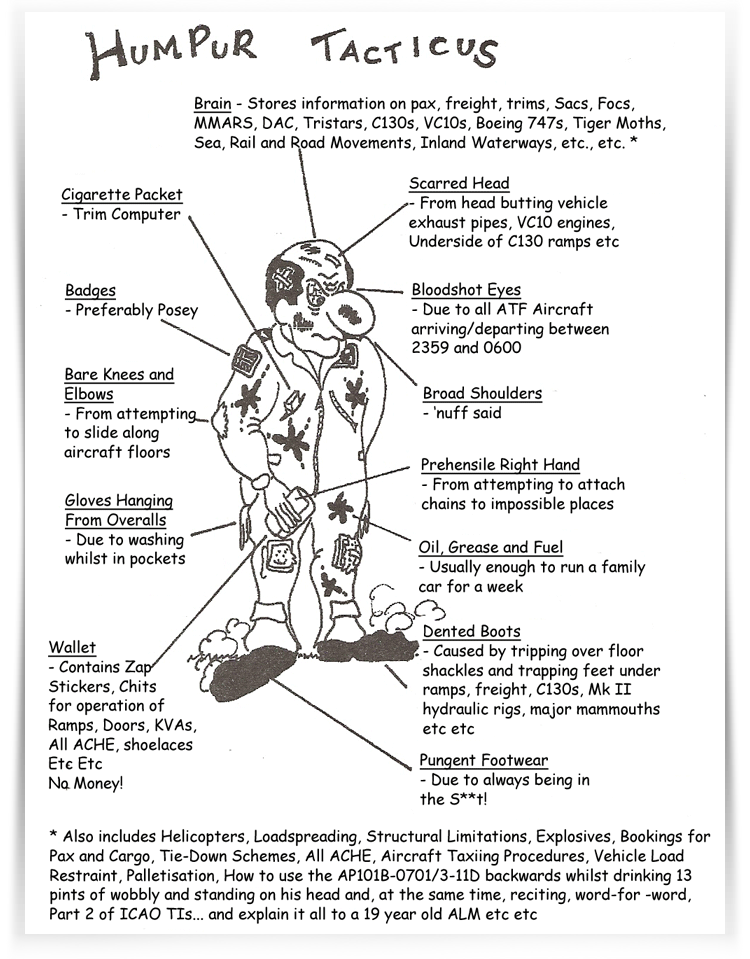

Cock-a-doodle-do
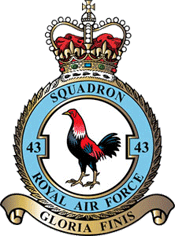
In 1972 a MAMS team were tasked to recover 43 Squadron (the Fighting Cocks) from Grazzinese Airbase to Leuchars via Akrotiri.
On arrival at Grazzinese, OC 43 Squadron approached the Team Leader, Gus Hatter, and asked if he could help sort out a problem. The problem was that the Italian Air Force had just presented 43 Squadron with 'Guiseppe - a fighting cockeral' and now they needed to get it back to Scotland.
"No problem" said Gus. "Big problem" said the team.
Against all advice Gus said he would fly it home via Cyprus.
On arrival at Grazzinese, OC 43 Squadron approached the Team Leader, Gus Hatter, and asked if he could help sort out a problem. The problem was that the Italian Air Force had just presented 43 Squadron with 'Guiseppe - a fighting cockeral' and now they needed to get it back to Scotland.
"No problem" said Gus. "Big problem" said the team.
Against all advice Gus said he would fly it home via Cyprus.
Included in a gobbly box was a boiled egg which Ross transfered to the cockeral's cage. The team then flew to Lyneham and deplaned. Somewhat bleary-eyed, the team made a run for Customs and waited at the barrier whilst Gus brought up the rear with the cockeral perched on his baggage trolley.
When questioned by Customs, he stated several times that it was a fighting cockeral to which the Customs man shook his head. Things began to get heated and Gus was adamant that the bird was a cockeral.
"If that is the bloody case then who laid the egg?" asked the Customs officer. At which point Gus noticed the egg and visibly paled as his team roared with laughter!
When questioned by Customs, he stated several times that it was a fighting cockeral to which the Customs man shook his head. Things began to get heated and Gus was adamant that the bird was a cockeral.
"If that is the bloody case then who laid the egg?" asked the Customs officer. At which point Gus noticed the egg and visibly paled as his team roared with laughter!
In transit at Akrotiri the bird was hidden under a net. However, after several 'Brandy Sours" whilst in transit, Sgt Ross McKerron decided to have some fun.
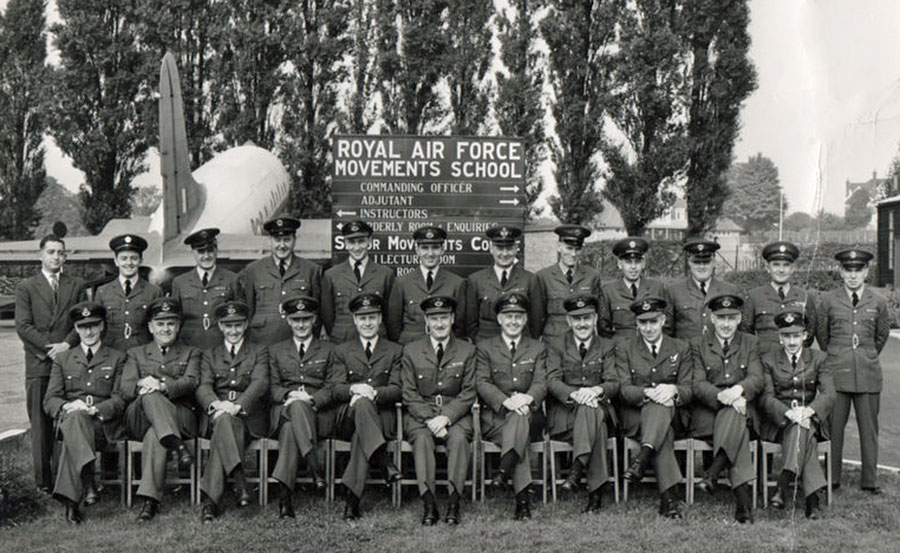
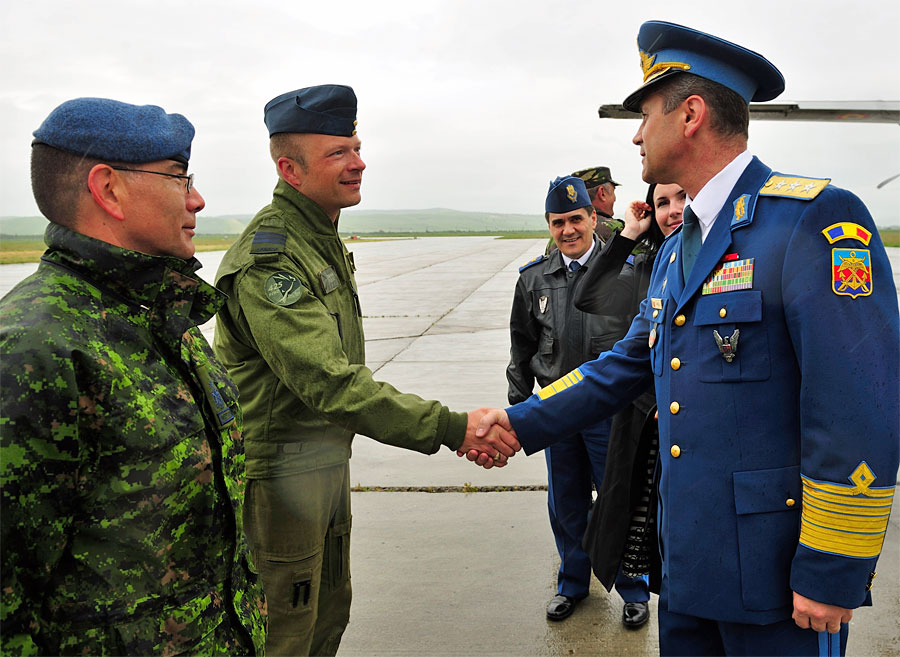
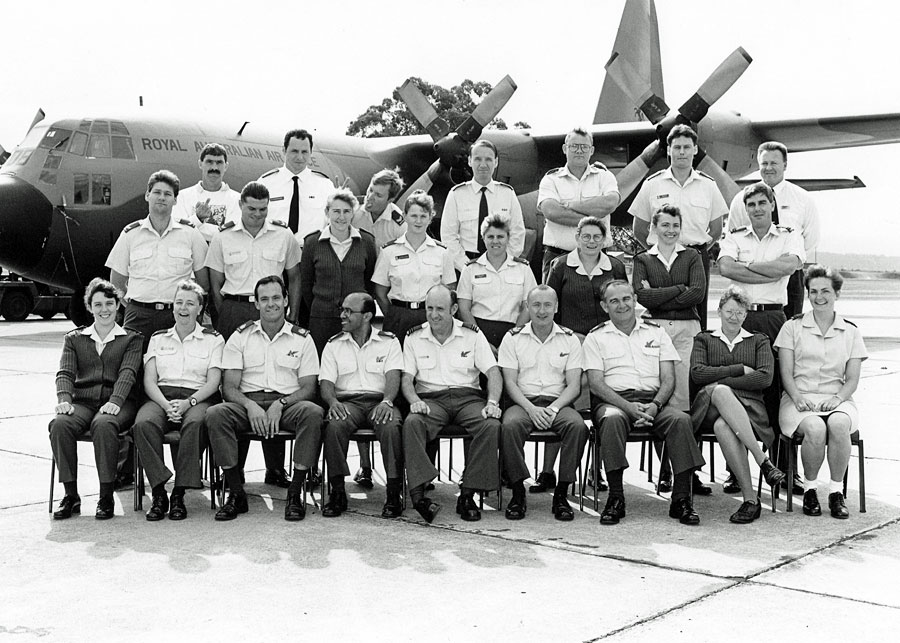
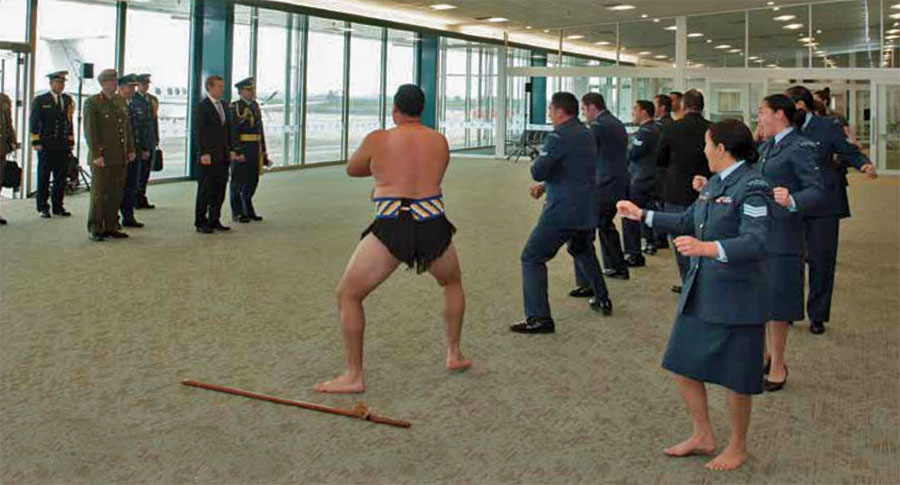
That's it for this issue
Have a great weekend!
Tony
ukmamsoba@gmail.com
Have a great weekend!
Tony
ukmamsoba@gmail.com
This is your opportunity to show your
appreciation and support the OBA!
appreciation and support the OBA!
















